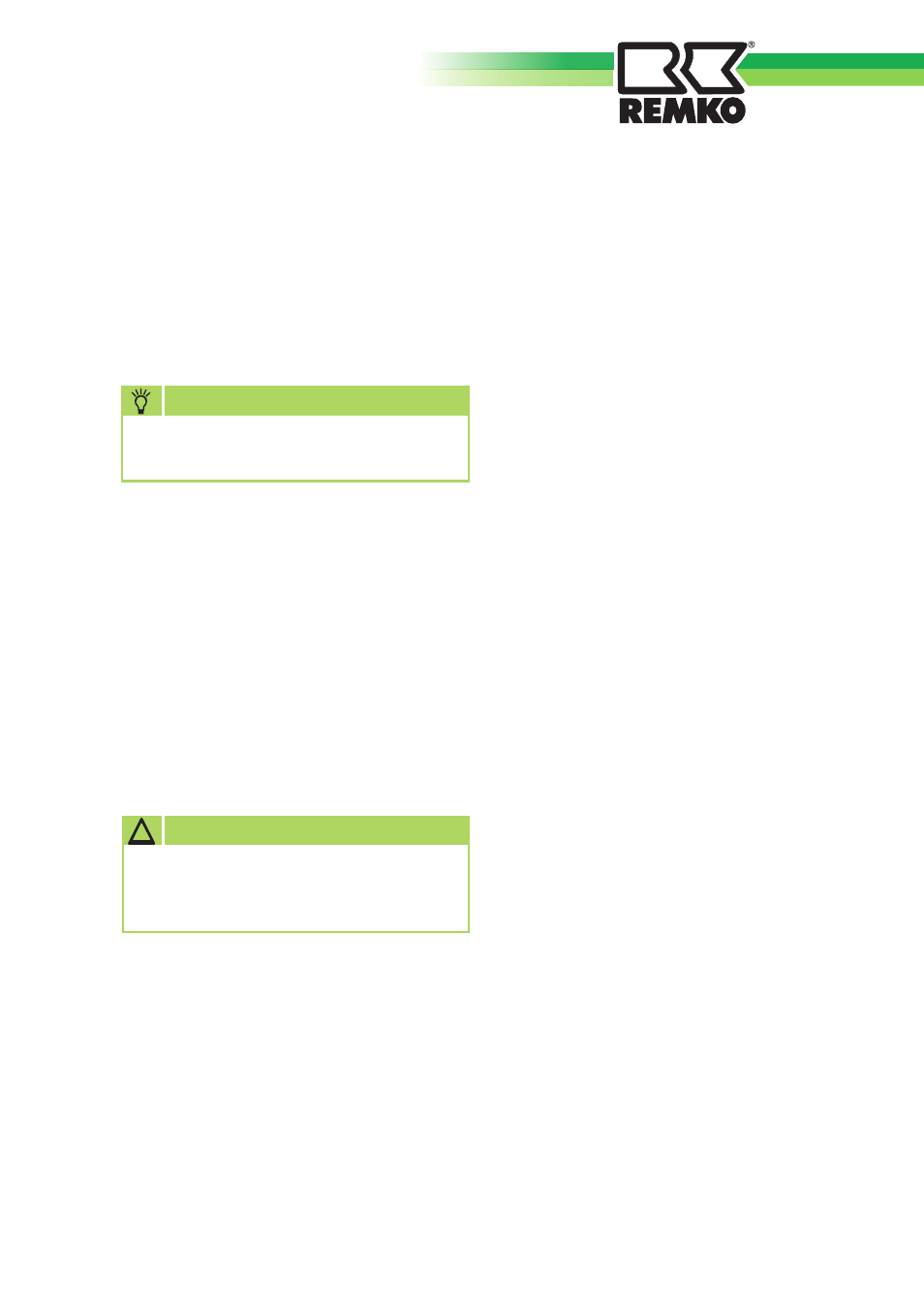REMKO Elektric Booster Heater User Manual
Page 5

5
This ensures the operational
reliability of your equipment!
NOTE
Maintenance
■
We recommend concluding
a maintenance contract with
a specialist firm, which includes
annual maintenance services.
■
Regularly check the function of
the safety valve.
The expansion water amount at maximum
heat (approx. 80°C) represents approx.
3.5% of the tank capacity.
When the safety valve test knob is
lifted or turned to the “Test” position,
the water must flow unhindered out of
the safety valve body into the drainage
funnel.
!
ATTENTION
This can cause the cold water
supply and parts of the storage tank
connection fitting to become hot!
If the tank is not heated or when warm
water is removed, no water should be
dripping from the safety valve. If this
does occur, either the pressure in the
water pipe is greater than the permitted
value, or the safety valve is defective.
If the pressure in the water pipe is higher
than permitted, a pressure relief valve
must be used.
In hard water areas, the limescale which
forms in the tank internal boiler and
the floating deposits of limescale must
be removed by a specialist after one
to two years of operation. Cleaning is
performed through the flange opening.
1. Remove the flanged lid
2.
.
Clean the tank.
The special enamelled inner container
of the water heater must not come into
contact with descaler.
3. Thoroughly flush out the unit.
4. Refit the flange, using a new seal,
tightening the bolts in a crosswise
pattern to a torque of 20 Nm.
5. Refit the flange heating cartridge.
6. Observe the heating process as per
initial operation.
The false anode which is fitted in
the WW_tank must be checked by
a specialist no longer than every 2 years
of operation (however, at the latest
when the part is removed in steps 3/4)
and this inspection must be documented.
If servicing tasks are performed,
the cleaning and servicing flange should
be opened, and the tank inspected for
any infiltration or soiling.
